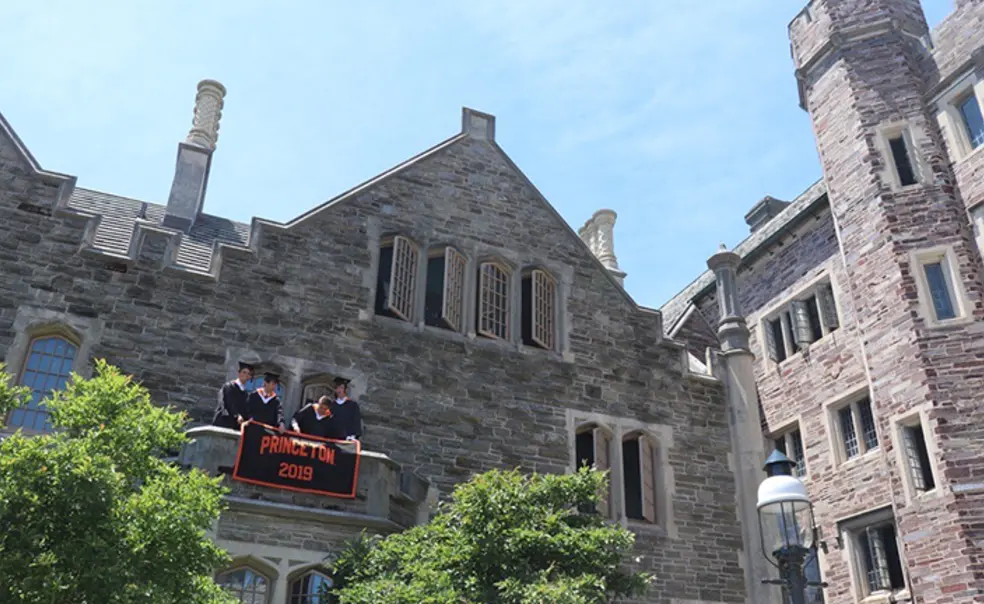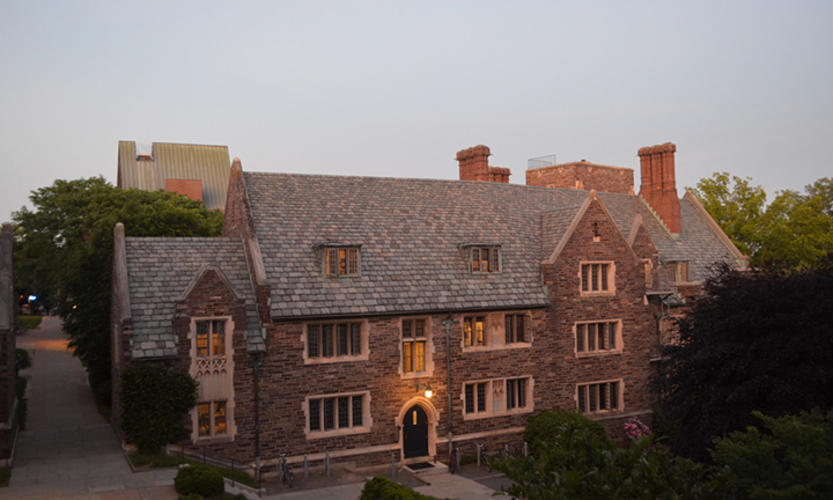Essay: From a Balcony, the Sights and Sounds of Senior Year
“I began to notice the details that made our little campus ecosystem hum”
At Princeton, my roommates and I were lucky enough to draw a senior year dorm room that had a balcony. We did not realize this until the day we moved into the room — a four-person suite on the third floor of Wright Hall, a difficult-to-find building that hides between the more famous Patton and Cuyler halls that line Elm Road — and found the stone perch easily accessible from a window. The view stretched nearly half a mile east to Washington Road, and it was just 10 minutes’ walk south to reach the stadium lights of the lacrosse and soccer fields.
The excellent thing about our balcony in the warmer months was that, during the quiet chill of the morning, the rising sun poked out over an adjacent gothic building and bathed it in a warm light that made the hair stand up on your arms. And by the late afternoon, when it was sometimes too unbearably hot to be outside at all, the shadow from our building cast a blanket of shade over our little perch to shade us from the insufferable heat. One night when I found the balcony more pleasant than the stuffy dorms with no air conditioning, I slept out there, layers of cotton blankets and nylon sleeping bags between my back and the hard stone floor.
But during the day, using pillows, beanbags, and lawn chairs, the four of us roommates would sit out on our perch and watch the campus roll by. We shouted friends’ names from above, briefly puzzling them before inviting them to join us for the view. During the dim light of the late afternoons, the guitars would come out, and songs like “You Are My Sunshine” and “Red River Valley” would ring out in the courtyard. Sitting out there so often, I began to notice the details that made our little campus ecosystem hum: the pair of falcons that soared overhead before breakfast; the daily 3:30 p.m. TAP Air Portugal flight from Lisbon that would often make a low, sweeping pass in front of our eyes on its descent into Newark; the red fox that crept out of its lair most spring nights around seven.
Our rare position at altitude on a largely short campus also privileged us to the sounds of Princeton’s surroundings, and one result of many evenings spent reading, writing, or chatting on the balcony was my familiarity with the sounds of different train whistles. The wimpiest of whistles, two short puffs, signaled the arrival or departure of the Princeton Dinky, the shortest scheduled passenger line in the country. One brief shriveling whistle meant the arrival of a New York- or Trenton-bound New Jersey Transit commuter train at Princeton Junction, 3 miles to the south. A deeper, longer, more serious whistle meant an Amtrak train — bound for places like Washington, D.C., Savannah, or New Orleans — was whipping by and rattling passengers lingering about the platforms.
Some of the whistles I heard from our balcony did not fit into any of these categories, and, what’s more, they seemed to be coming from a different direction altogether. I remembered my former professor (and lifelong Princeton resident) John McPhee ’53 once telling our class that he counted freight-train-whistle intervals to lull himself to sleep. I wrote to him, and he answered quickly, detailing precisely what I had been hearing all year: “The train whistles you are hearing are from the onetime Reading Railroad, about 5 and more miles north.” He knew exactly how many seconds a train took to go between grade crossings at Louellen Street in Hopewell, Province Line Road, and Spring Hill Road by the sounds it made. “The train reaches each grade crossing exactly as the fourth of four notes sounds, or does if the engineer is any good at this,” he wrote. “Nothing about it is automatic. The engineer is controlling the sounds — two longs, one short, another long — with a plunger in the console. Listen closely, ingest the intervals, discern the pattern I have given here, or its reverse, and you can tell if the train is going north or south. If you aren’t asleep.”
These were some of the curious ways in which my roommates and I ended our time at Princeton. We were “balcony people,” and now, coming up on a year since we said goodbye, there are few moments I’ve missed more. (With Reunions cancelled for the first time since World War II, it could be another year before we’ll be able to reclaim our perch.) But in the meantime, I like to think that certain parts of the Princeton ecosystem are still humming — the foxes and the falcons, the planes and the trains, and the memories that inhabit an old, storied campus, even if we’re not there to savor them just yet.














No responses yet